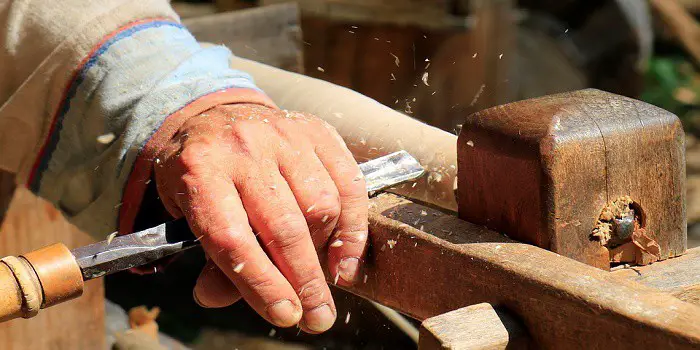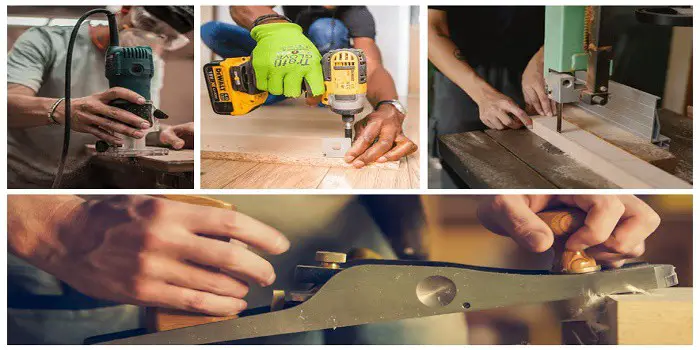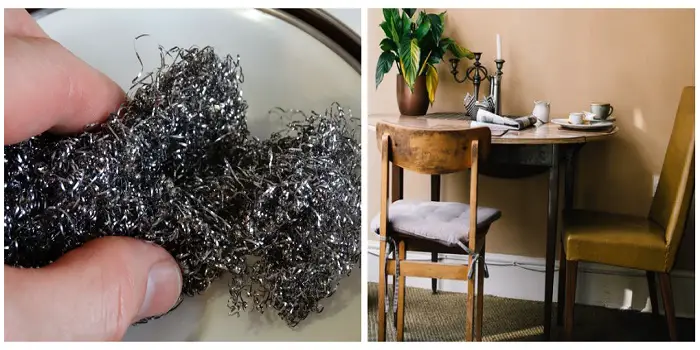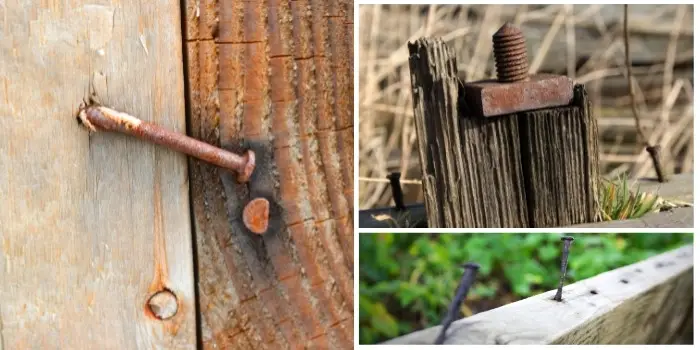
There are times when you are going to have to cut the head of a nail, screw, or other fasteners that are stuck in the material.
This often occurs when the screw head gets stripped, or the nail head is bent to a point where it cannot be removed using standard methods.
Cutting off the screw or nail solves the problem rather quickly and easily when you have the right tools.
This is because a metal screw can be a tough customer to remove if you do not have the proper tools to do the job.
What follows are five different tools and methods you can use to simply cut the head off a screw or nail that is stuck in place.
Method 1: Bolt Cutters
These are similar to wire cutters but are made to cut through larger, thicker metal.
While bigger, they can be easier to use thanks to the long handles. This allows for more leverage as you cut into the metal.
Bolt cutters are expertly designed to multiply the application of force that you use with your hands. If you use fasteners, screws, or nails thicker than normal, then the bolt cutter may be the ideal tool.
What may be 50 pounds of applied force is multiplied 400 times which will not only cut through the average screw, nail, or fastener but also cut through a wide variety of materials that includes bolts, cables, padlocks, mesh, piping, sheet metal, and more.
The downside is that they are larger than wire cutters and may not be applicable to smaller screws or nails in tight places.
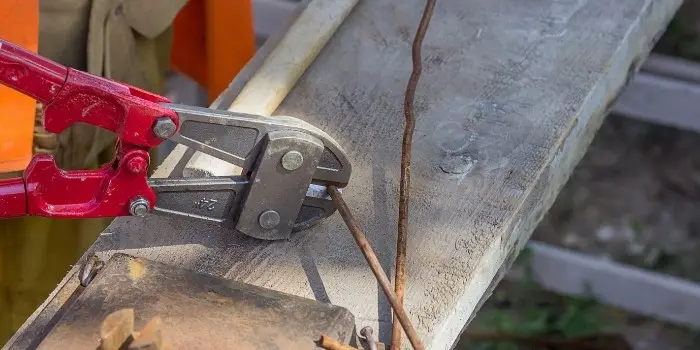
Method 2: Hand Saw
This is arguably the most well-known method of slicing away a screw or nailhead.
You will need a hacksaw that has teeth designed to cut through metal.
On the positive side, since the hacksaw is designed to cut through metal, most jobs of this nature should go quickly.
But what if you do not have a hacksaw handy? You can also use a woodworking hand saw to do the same thing.
Just remember not to use the teeth of the woodworking saw, as they will be ruined by trying to cut into the metal. Instead, create a few dings and divots on the backside of the saw.
Then use that backside to cut through the screw or nail. It works, although it will not be as smooth compared to a hacksaw.
Method 3: Jigsaw
For snapping off the screws that are coming out of wood, get a metal-cutting blade for your jigsaw.
Although a jigsaw will work quite well in cutting away screws and nails, a circular saw is easier to use.
However, you may only have a jigsaw handy, so just place the blade flat against the surface and cut it into the screw or nailhead until it is removed.
The downside is that you do not have much room to use the jigsaw, but if that is the case, you should probably not use a saw at all since the space is limited.
Method 4: Reciprocating Saw
This is a great way to cut through screw or nail heads, thanks to the action of the Sawzall or reciprocating saw.
The reciprocating saw is one of the most versatile types of saws available.
It can work in small spaces where a handsaw or jigsaw may not work.
Plus, it works more quickly than wire cutters, even if it takes up more room.
If you need to cut a screw or nail that’s holding two pieces of wood together, the reciprocating saw is arguably the perfect choice.
Just remember to put a metal-cutting blade into the saw before you start to use it. Otherwise, you are going to ruin the blade.
To limit pinching and binding, hold the saw guard against the wood firmly. This will allow for a smooth cut, and you will keep better control of the reciprocating saw.
Method 5: Wire Cutters
One of the simplest and easiest methods is to use wire cutters to cut away the top of the screw or nail.
Wire cutters are made to cut through metal and other materials with relative ease. Keep in mind that not just any old pair of wire cutters will do.
There are different types of cutters, so you will want a pair with beveled blades that contact each other after the cut has been performed.
This type is called an anvil cutter and works best when cutting the heads off screws and nails.
Get a pair of anvil cutters with long handles because you can get better leverage. This means using less force to cut through the screw or nailhead.
Bonus tip: If it’s too challenging for you to fix nails sticking out of wood, it’s best to cover them up to make them out of sight.
You can use some wooden parts over them or use techniques like caulking, painting, applying putty, etc. to hide those ugly guys.
Final Thoughts
Screws that stick out of wood surfaces are not only dangerous but also can be hard to remove if they are old and rusted.
While performing DIY projects or home renovations, keeping the cutters handy is good because you never know when a screw or nail will need to be cut.
Also, if you are putting nails or screws into materials often, you should carry a pair of wire cutters and have a reciprocating saw handy to shorten or grind them down.
Share the post "Old Screws & Nails Sticking Out of Wood – 5 Ways to Cut"

Hi, I am Mark Garner a professional carpenter, woodworker, and DIY painter. I live in the small city of Peoria, Arizona as a semi-retired woodworker. I have started this blog with a simple motive to help you with my wood experience in this sector. If you like to know more about what I love doing and how it all got started, you can check more about me here.


